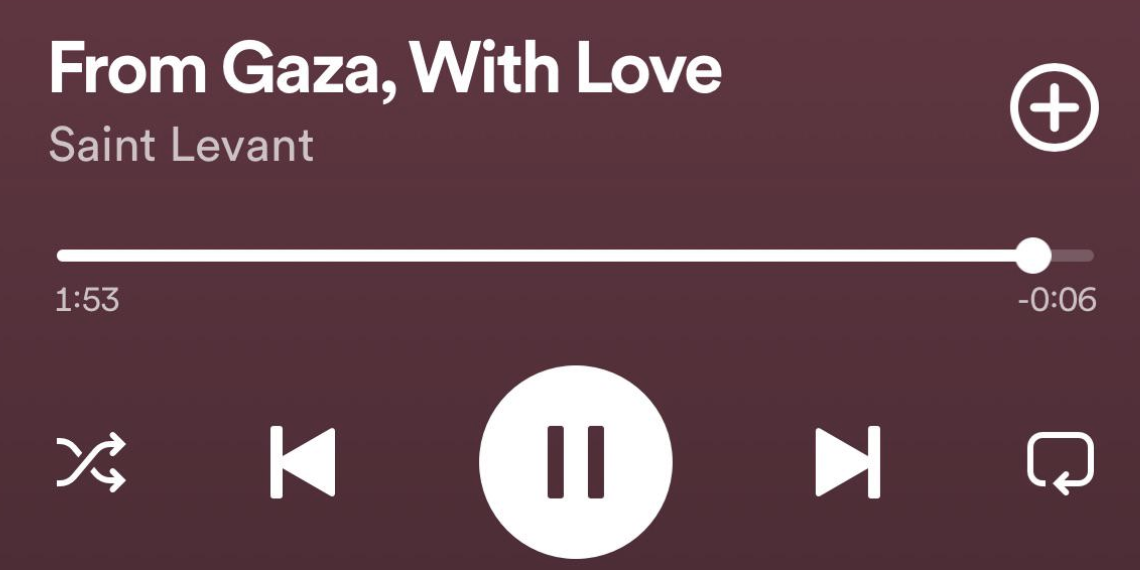The power of music to connect people across different cultures and languages is not only a testament to its universal appeal but also showcases its role as a catalyst for cultural fusion and mutual understanding. Especially in distressing times, like now, when the world witnesses tragedies of injustice and the genocide of a people, the role of music becomes even more profound and necessary.
One of its most beautiful aspects is its capacity to combine languages, thereby reaching a broader audience while simultaneously celebrating linguistic diversity. Artists like Saint Levant, who draw upon their multicultural backgrounds, come up with global hits like “very few friends,” a multi-lingual rap with its blend of languages, speaking volumes about the artist’s journey through different cultures, all while staying true to his roots.
Songs like “Despacito” by Luis Fonsi and Daddy Yankee, featuring Justin Bieber, seamlessly incorporate Spanish and English, creating a global hit that resonated with audiences worldwide. It’s not just the catchy beat that captures you but the celebration of cultural diversity and the invitation to everyone, regardless of their native language, to enjoy it together.
The industry has witnessed a positive shift in recent years, thanks to the power of the internet in democratising music discovery, allowing songs to go viral overnight and artists to gain international fame in no time. The recent collaboration between Pakistani music group AUR and Zayn Malik on “Tu Hai Kahan” exemplifies this perfectly.
Similarly, Bollywood’s Shreya Goshal and Saad Lamjarred’s “Guli Mata” showcase how traditional sounds can blend with modern influences to create something truly global. The homage to Amr Diab’s Arabic hit “Tamally Maak” in Bollywood’s “Kaho na Kaho” further highlights how music can bridge the gap between different musical traditions and languages, enriching the global music scene.
47SOUL, with their innovative Shamstep genre, merges traditional Palestinian street music with contemporary beats, funk, hip-hop, and rock, employing both Arabic and English lyrics to propagate messages of freedom, resistance, and unity. Similarly, DAM, pioneers of Arabic hip-hop, blend Arabic rap with traditional melodies in “Ya Tayr El Tayer,” addressing socio-political issues while conveying potent messages of longing and resistance. Le Trio Joubran’s “Carry the Earth” collaborates across cultures to produce an instrumental that combines the oud with Western instruments, creating a poignant homage to the human costs of conflict.
Rasha Nahas’s “Desert” offers another layer of fusion, blending rock, jazz, and folk with her poetic lyrics in both Arabic and English, reflecting her diverse influences and the complexities of identity and belonging. Additionally, artists like Elyanna, with her unique blend of traditional Palestinian sounds and contemporary global music trends, further illustrate this phenomenon. Her tracks often feature a mix of Arabic and English, appealing to both Middle Eastern and Western audiences.
The trend towards musical fusion and multilingual songs is not just a commercial strategy to appeal to a global market, it also reflects a deeper understanding and respect for cultural diversity. Encouraging listeners to explore and appreciate the beauty of other cultures, promoting empathy, tolerance, and mutual respect. Through the blending of languages and the fusion of cultural elements, music continues to be a leading force in promoting global understanding and unity, making the world a smaller, more connected place.




